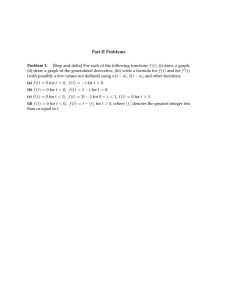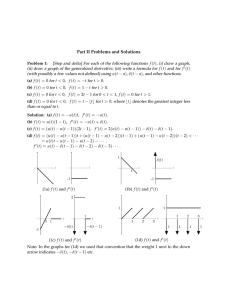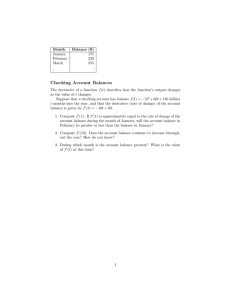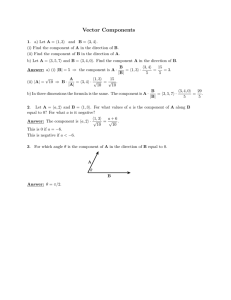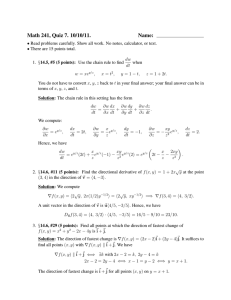Problems: Directional Derivatives
advertisement
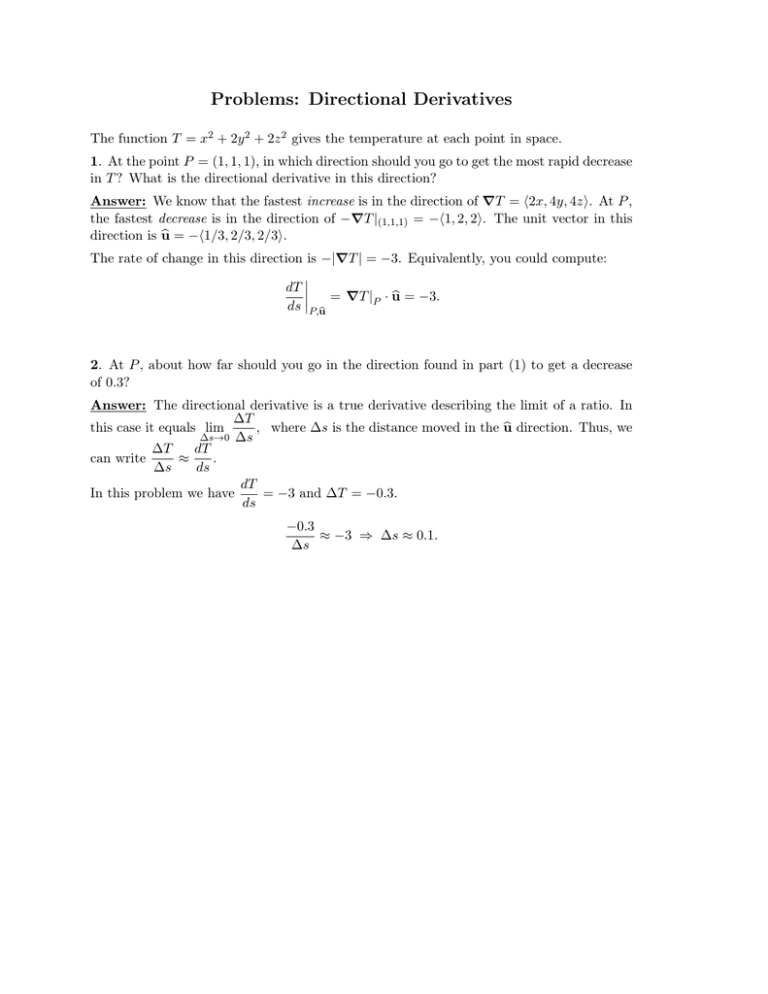
Problems: Directional Derivatives The function T = x2 + 2y 2 + 2z 2 gives the temperature at each point in space. 1. At the point P = (1, 1, 1), in which direction should you go to get the most rapid decrease in T ? What is the directional derivative in this direction? Answer: We know that the fastest increase is in the direction of VT = (2x, 4y, 4z). At P , the fastest decrease is in the direction of −VT |(1,1,1) = −(1, 2, 2). The unit vector in this u = −(1/3, 2/3, 2/3). direction is u The rate of change in this direction is −|VT | = −3. Equivalently, you could compute: dT u = −3. = VT |P · u ds P,u � 2. At P , about how far should you go in the direction found in part (1) to get a decrease of 0.3? Answer: The directional derivative is a true derivative describing the limit of a ratio. In ΔT u direction. Thus, we this case it equals lim , where Δs is the distance moved in the u Δs→0 Δs ΔT dT can write ≈ . Δs ds dT In this problem we have = −3 and ΔT = −0.3. ds −0.3 ≈ −3 ⇒ Δs ≈ 0.1. Δs MIT OpenCourseWare http://ocw.mit.edu 18.02SC Multivariable Calculus Fall 2010 For information about citing these materials or our Terms of Use, visit: http://ocw.mit.edu/terms.
